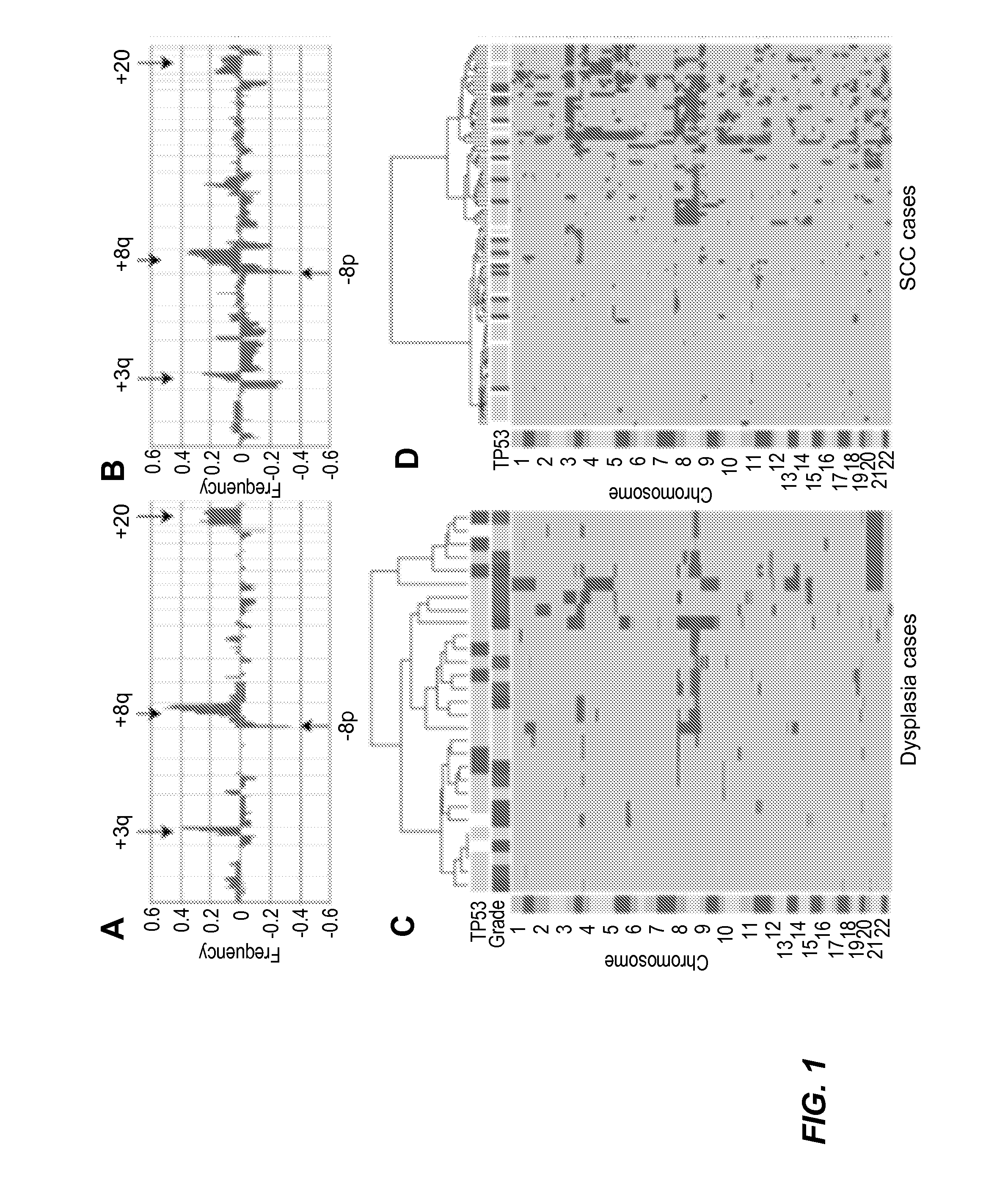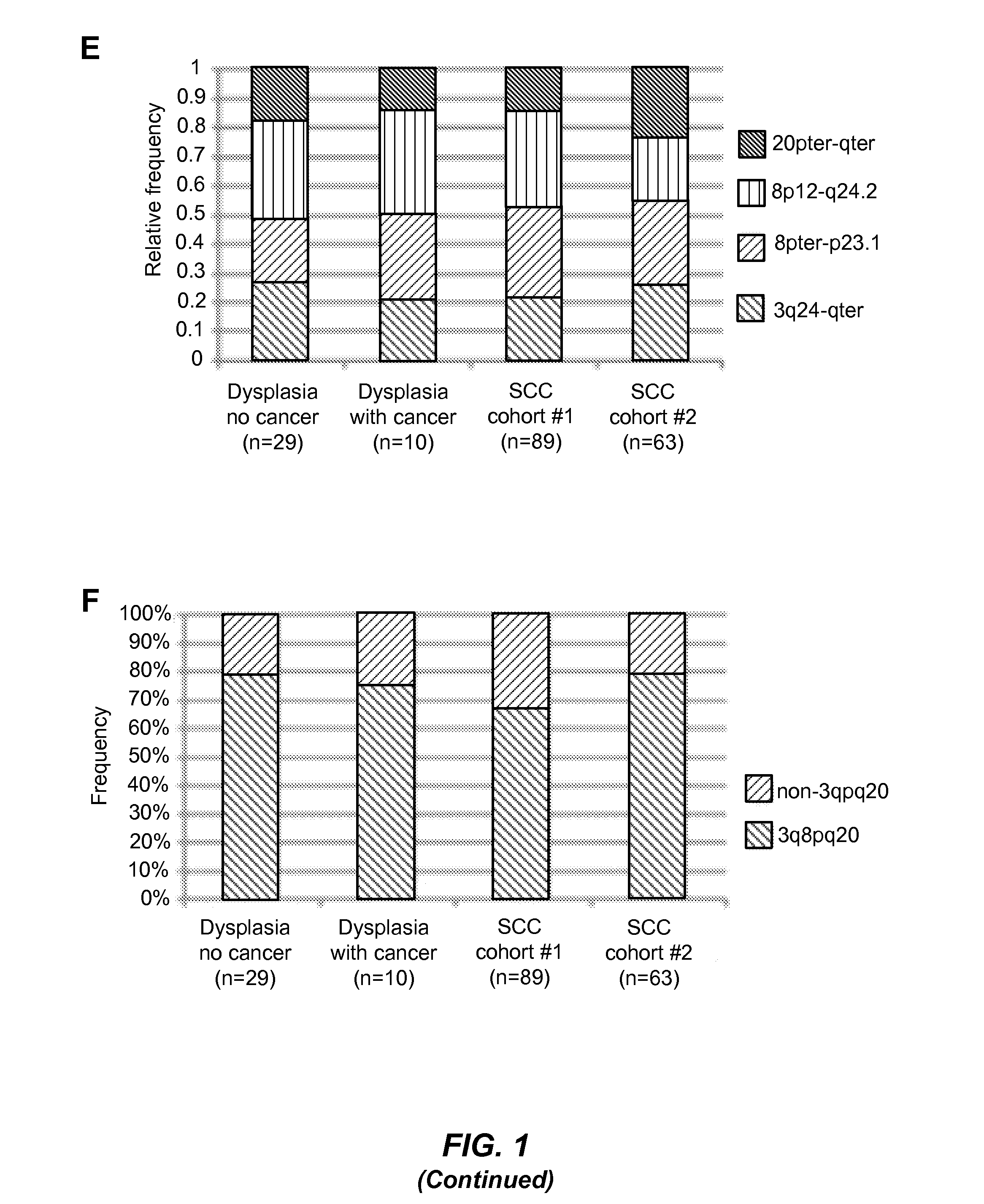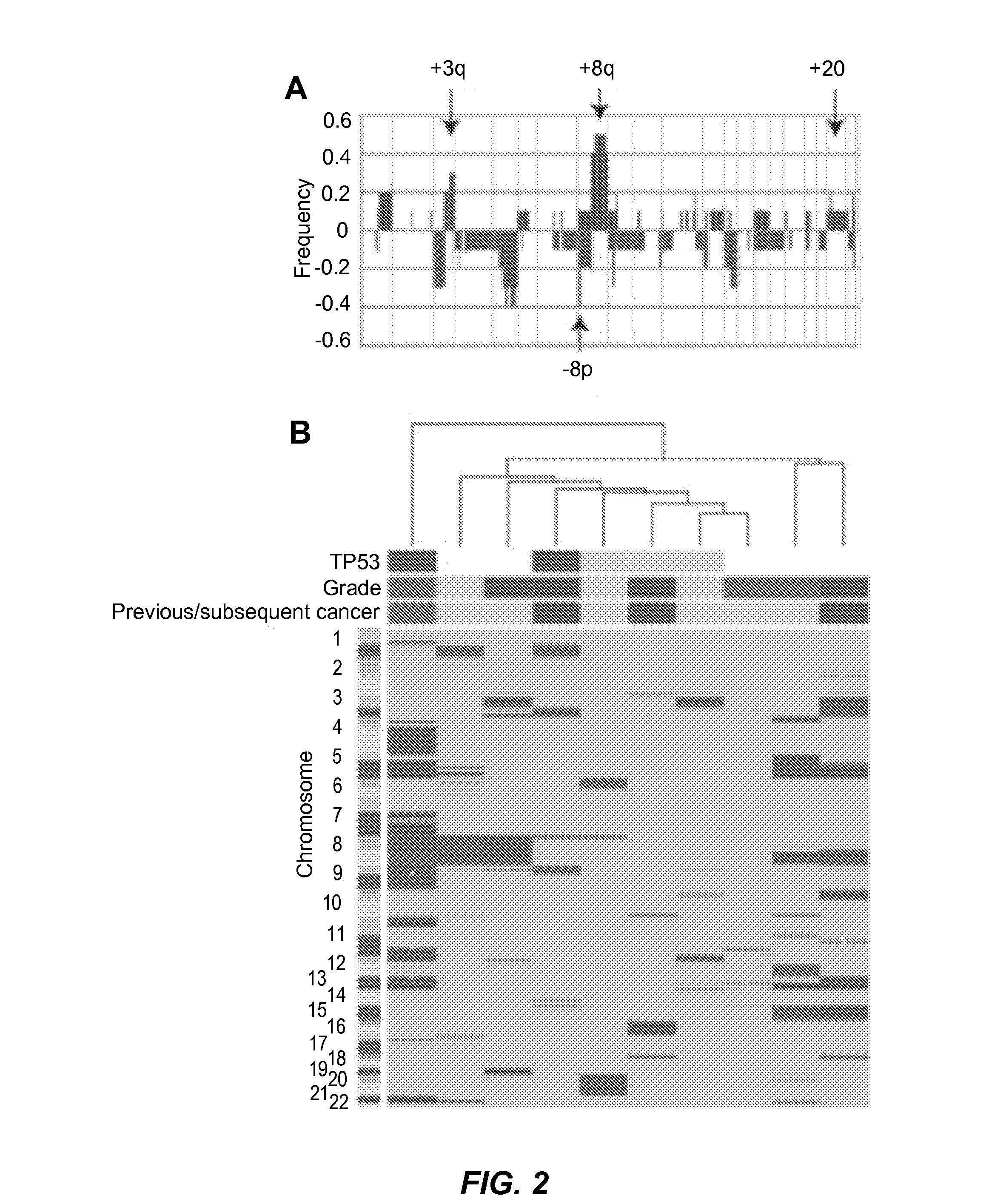Molecular subtyping of oral squamous cell carcinoma to distinguish a subtype that is unlikely to metastasize
a cancer and oral squamous cell technology, applied in the field of oral squamous cell carcinoma molecular subtyping to distinguish a subtype that is unlikely to meetastasize, can solve the problems of patient to unnecessary major surgery with its associated risks and morbidity, the survival rate of oral squamous cell carcinoma patients at 40%, and the survival rate of patients with neck metastasis
- Summary
- Abstract
- Description
- Claims
- Application Information
AI Technical Summary
Benefits of technology
Problems solved by technology
Method used
Image
Examples
example 1
Oral Squamous Cell Carcinoma Copy Number Aberrations Associated with a Subtype that is Unlikely to Metastasize
[0179]Clinically evident precancerous oral lesions preceding development of oral squamous cell carcinomas (SCC) include oral epithelial dysplasia of varying grades (mild, moderate, severe) (5). Transformation to cancer occurs in 16% of mild and 55% of moderate / severe dysplasia and is considered to occur by stepwise acquisition of genetic and / or epigenetic alterations (6). The data in this study show that +3q24-qter, −8pter-p23.1, +8q12-q24.2 and +20 occur at ≧20% frequency in oral dysplasia cases with no known association with oral cancer. Moreover, 75-80% of all dysplasia and SCC cases harbor one or more of these copy number aberrations, with additional recurrent aberrant regions occurring in SCC. On the other hand, 20-25% of dysplasia and oral SCC cases lack the copy number aberrations +3q, −8p, +8q and +20, and have few or no other copy number alterations. Thus, aberratio...
example 2
Assessment of DNA Copy Number by Array CGH from Brush Biopsies
[0232]Brush biopsy sample analyses have employed DNA isolated from buccal swabs for PCR based assays (Garcia-Closas, et al., Cancer Epidemiol Biomarkers Prev, (2001) 10(6):687-96; and Mao, et al., Proc Natl Acad Sci USA, (1994) 91(21):9871-5) or cytological analyses using FISH on nuclei from cells smeared directly on glass slides and from fixed cell suspensions (FIG. 14). We have experience using the Oral CDx brush (Oral Scan Laboratories, Inc., Suffern, N.Y.), foam swabs (FIG. 15c) and the Isohelix swab (FIG. 15b). We prefer the Isohelix system, because the design of the swab will minimize bleeding (FIG. 15a), which could interfere with the measurement, and the tube and cap design (FIG. 15b) allow for easy release of the swab from the handle.
[0233]We have established that array CGH can be carried out with DNA isolated from oral brush biopsy samples. Our array CGH hybridizations typically use 0.5 μg of genomic DNA, althou...
PUM
| Property | Measurement | Unit |
|---|---|---|
| Mass | aaaaa | aaaaa |
| Mass | aaaaa | aaaaa |
| Volume | aaaaa | aaaaa |
Abstract
Description
Claims
Application Information
 Login to View More
Login to View More - R&D
- Intellectual Property
- Life Sciences
- Materials
- Tech Scout
- Unparalleled Data Quality
- Higher Quality Content
- 60% Fewer Hallucinations
Browse by: Latest US Patents, China's latest patents, Technical Efficacy Thesaurus, Application Domain, Technology Topic, Popular Technical Reports.
© 2025 PatSnap. All rights reserved.Legal|Privacy policy|Modern Slavery Act Transparency Statement|Sitemap|About US| Contact US: help@patsnap.com



